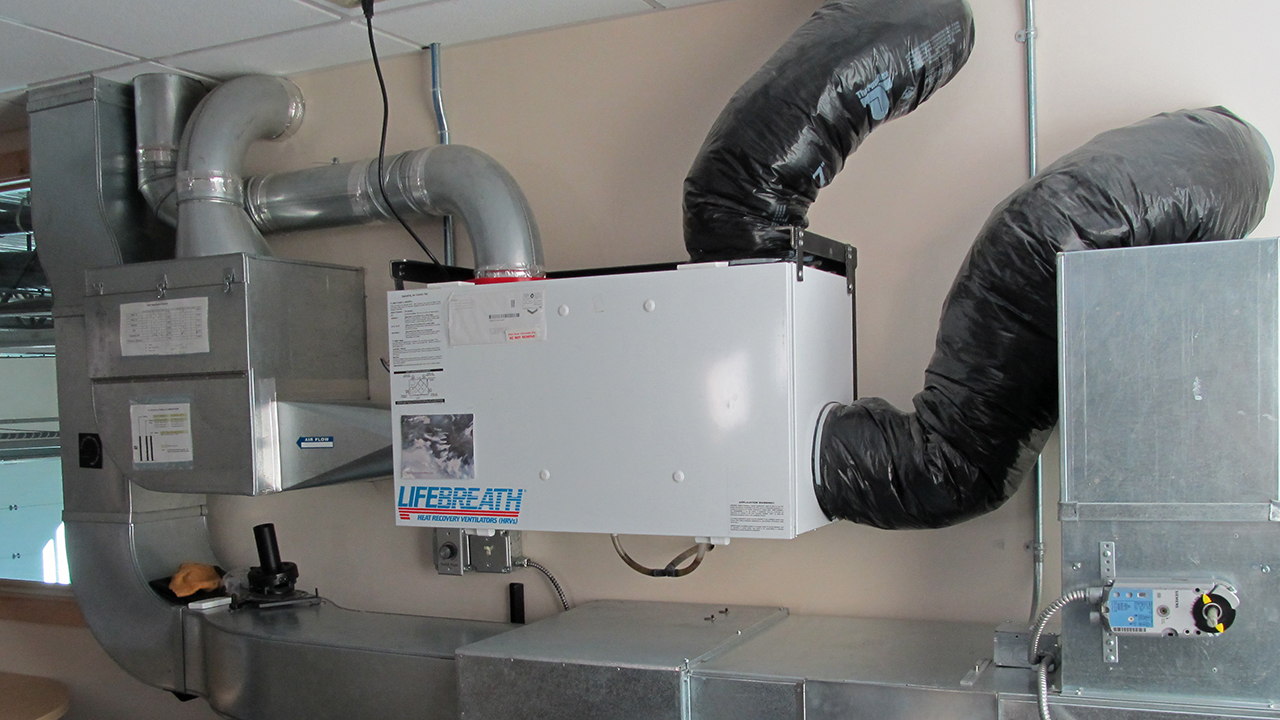Discovering the Conveniences of Heat Recovery Ventilation for Energy Performance in Houses
Heat Recovery Ventilation (HRV) systems use homeowners a functional approach to boosting energy performance. By recovering warm from outward bound air, these systems can considerably reduce heating & cooling costs. Additionally, they provide a constant supply of fresh air, boosting interior air top quality and comfort degrees. As property owners think about lasting options, recognizing the subtleties of HRV systems becomes significantly vital. What aspects should one assess prior to making such an investment?
Recognizing Heat Recovery Ventilation Equipments

Exactly How HRV Enhances Indoor Air High Quality

Power Financial Savings: The Economic Advantages of HRV
Making best use of energy effectiveness, heat recovery ventilation (HRV) systems use considerable financial advantages for house owners. By recuperating and reusing heat from exhaust air, HRVs considerably reduce home heating and air conditioning expenses. This technology can lead to power financial savings of approximately 30%, relying on environment and use patterns. House owners usually notice minimized energy bills shortly after setup, making HRVs a monetarily smart investment over time. Additionally, numerous regions offer motivations or discounts for energy-efficient upgrades, even more enhancing the monetary charm. As energy prices proceed to climb, the cost-effectiveness of HRVs comes to be progressively clear. Generally, the unification of HRV systems not just promotes energy effectiveness but additionally adds to lasting economic cost savings for homes.
The Ecological Influence of Heat Recovery Ventilation
A substantial environmental benefit of heat recovery ventilation (HRV) systems hinges on their ability to minimize general energy consumption. By redeeming heat from exhaust air and transferring it to incoming fresh air, HRV systems lessen the demand for energy-intensive heating and cooling down methods. This decrease in power need adds to decrease greenhouse gas discharges, as much less nonrenewable fuel source is called for to keep comfy interior temperature levels. In addition, HRV systems improve interior air top quality by successfully exchanging stale air with fresh exterior air, lowering reliance on mechanical air conditioning systems that can harm the atmosphere. Overall, the application of HRV systems sustains sustainable living techniques and aligns with international efforts to fight environment modification by advertising energy efficiency in domestic settings.
Picking the Right HRV System for Your Home
Exactly Get the facts how can home owners ensure they select the right heat recovery ventilation (HRV) system for their needs? Initially, they ought to examine their home's dimension and format, as these factors affect air flow requirements. Next off, evaluating the system's effectiveness ratings is crucial, as higher rankings show better efficiency and energy financial savings. Home owners need to likewise consider setup and upkeep costs, contrasting different brands and models for value. In addition, it is necessary to evaluate noise levels, as some systems operate even more quietly than others. Consulting with HVAC professionals can offer tailored suggestions based upon specific home conditions. Finally, examining individual evaluations and service warranties can aid in making an educated decision, making certain that the picked HRV system properly improves interior air top quality and energy effectiveness.
Often Asked Questions

Exactly how Often Should I Tidy or Keep My HRV System?
The frequency of cleansing or maintaining a warm healing ventilation (HRV) system typically depends upon usage and ecological factors. Typically, it is a good idea to carry out maintenance every 6 months to ensure peak efficiency and air top quality.

Can HRV Solutions Help In Reducing Humidity Levels Indoors?
HRV systems can properly reduce interior humidity levels by trading stagnant, humid air with fresh, drier air from outdoors. HRV Heat Recovery Ventilation. This process helps preserve a well balanced interior environment, boosting comfort and protecting against moisture-related concerns
What Is the Life-span of a Common HRV System?
The lifespan of a regular heat recovery ventilation (HRV) system varies, typically lasting in between 10 to 15 years. Normal upkeep can expand its efficiency and have a peek here operational life, ensuring peak efficiency pop over here throughout its usage duration.
Are There Any Type Of Sound Worry About HRV Solutions?
Sound interest in HRV systems can arise, especially from follower procedure. However, many modern units are made to lessen sound levels, guaranteeing they run quietly while preserving effectiveness, which attends to prospective disturbances in living settings.
Can I Mount an HRV System Myself, or Do I Required an Expert?
The specific contemplated whether to install the heat recovery ventilation (HRV) system personally or employ an expert. Typically, while do it yourself installment is feasible, know-how assurances proper functionality and compliance with neighborhood building ordinance, improving system efficiency.